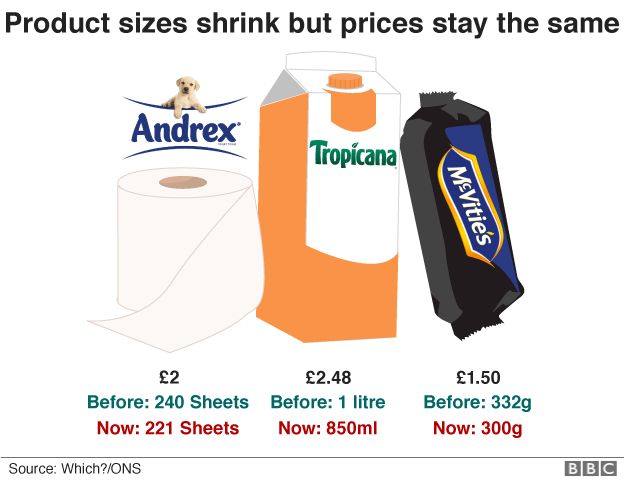From foods to paper goods, more than 2,500 products have 'shrunk' whilst their retail prices have not decreased during the past five years. This shrinkflation reflects increased costs facing manufacturers, changes in foreign exchange rates after the Brexit vote and consumer resistance to paying higher prices. As a result of these environmental and internal forces, brands are reducing the size of some products without changing the prices.
Yet, according to the UK Office of National Statistics, more than 600 items have actually increased in size during the past five years. This reflects the trend towards focusing consumers on value. 'More for the same price' sends a message to price-conscious shoppers that a product will deliver higher value than some competing items.
More shrinkflation is on the way as marketers cope with continued cost increases and ongoing currency swings that can affect what manufacturers pay for ingredients and what they receive in payment from wholesale buyers.
Shrinkflation is usually not publicised by the manufacturers...but government offices and media reporters take notice. Then consumers become aware, and have to decide whether to continue buying a favourite brand or product, or change behaviour and buy something else.
skip to main |
skip to sidebar

Companion blog to the textbook by Marian Burk Wood includes links to resources for marketing planning
Updated list of links
About the Author

- Marian B. Wood
- After holding executive positions in corporate and non-profit marketing with Citibank, JPMorgan Chase, and the National Retail Federation, I became a textbook author at the dawn of the Internet age. Pearson Education publishes my college textbook, 'Essential Guide to Marketing Planning.'
Search This Blog
Blog Archive
Privacy Policy
This site uses Google's Blogger technology. Be aware that Google serves cookies to analyse traffic to this blog. If you contact me via my blog, I'll use your email only to respond to your inquiry. Any comments you submit that are posted will be publicly visible. If you click on any links from this blog to outside sites, please review their privacy policies and content. By using this site, you agree to these terms of use.

